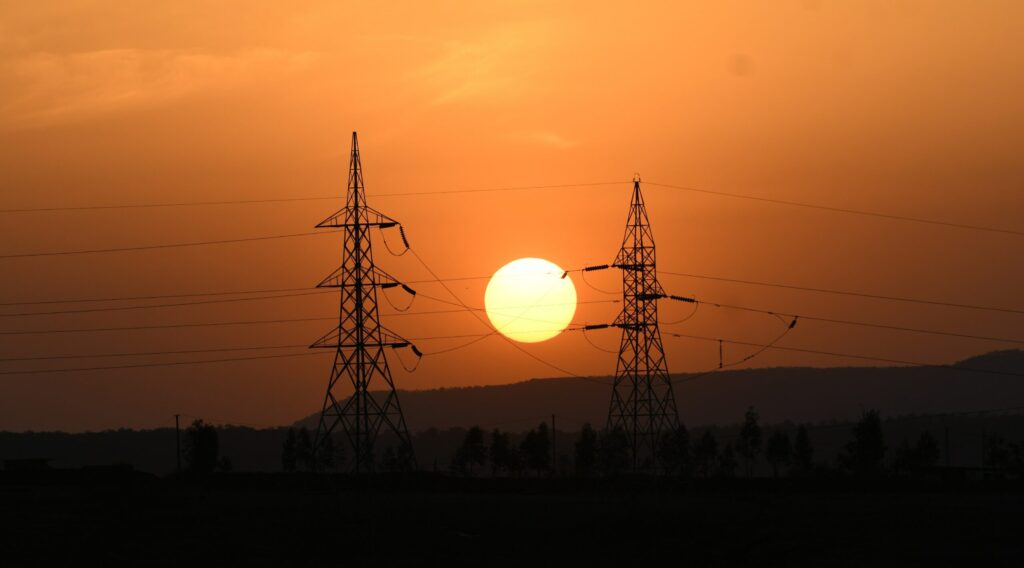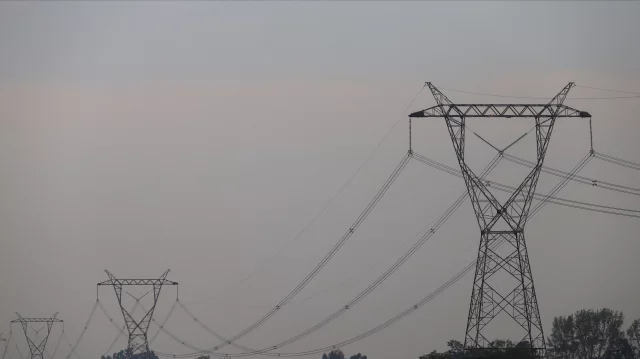- Increased power cuts and blackouts in Argentina impact the industry, economy, social and environmental conditions.
- There are several factors that drive the increase in power cuts including aging infrastructure, imbalanced supply and demand, and lack of energy storage systems.
- The industry and governments should impliment various factors to address the issues and ensure a sustainable energy future.
Several areas in Argentina have suffered from prolonged power cuts affecting the country. Frequent blackouts disrupt manufacturing, services, and retail operations. This leads to financial losses to businesses dependent on electricity. Power cuts can also impact public services and daily life. It can jeopardize patient care, transport, and education. Argentina is part of an interconnected grid, and power failures can affect Uruguay, Paraguay, and Brazil. Power cuts can highlight the need for renewable energy investments, which pushes Argentina towards solar and wind energy. Recent power cuts and blackouts highlight the importance of robust energy infrastructure, economic policies, and regional cooperation. Investing in infrastructure and enhancing regional collaboration may help build a more resilient and sustainable energy future.
Argentina is part of regional energy trade agreements such as the Southern Common Market. Power cuts disrupt energy exports, which affects neighboring countries like Brazil, Uruguay, and Chile. This has led to the increased interest in diversifying energy sources and enhancing regional energy integration. To mitigate the impacts of blackouts, the region can invest in infrastructure, policy reforms, and regional cooperation. This will help invest in upgrading and expanding the power grid to prevent future blackouts. Reforming energy subsidies and pricing mechanisms can encourage private investment.
Causes of power cuts in Argentina
Power cuts in Argentina and the metropolitan area arise from structural, economic, and environmental factors. Argentina’s aging infrastructure, supply shortages, economic instability, regulatory challenges, and environmental factors. To address these issues, the country could put in place investments, policy reforms, and diversification of energy sources. Other mitigation strategies include diversification of energy sources, energy efficiency, and regional cooperation. Discussed below are the common causes of power cuts in Argentina.

- Aging infrastructure—the power grid in the country has been aging and is not keeping pace with growing demand. Many components of the transmission and distribution networks are outdated and prone to failures. Underinvestment in infrastructure maintenance and upgrades worsens power cuts.
- Supply shortages—Argentina depends on natural gas for electricity generation. Prolonged dry spells have reduced water levels in reservoirs, which reduces hydropower production.
- Economic instability—high inflation and currency devaluation disrupts the purchasing power of both consumers and utilities. Energy subsidies and price controls keep consumer prices low and lead to underfunding of critical infrastructure projects.
- Regulatory and policy challenges—changes in policies and regulations create uncertainty that deter long-term investments. Complex bureaucratic processes can delay the approval and implementation of new energy projects.
- Environmental factors – Argentina is experiencing extreme weather events that add extra stress on the power grid. Long-term climate change affects the reliability of hydropower and other renewable energy sources.
- Demand-supply imbalance—economic growth and increased electrification have led to rising energy demand. With low supply, there is an imbalance between demand and available generation capacity. The grid may struggle to manage peak loads during extreme weather conditions.
- Lack of energy storage and backup systems—Argentina has limited energy storage capacity. This makes it hard to stabilize the grid during supply fluctuations.
Impacts of power cuts and blackouts
Power cuts and blackouts have led to consequences affecting the economy, public services, regional energy security, and daily life. The power cuts can also strain the economy, public services, and regional energy stability. This can lead to public dissatisfaction and political pressure while exposing weaknesses in the energy infrastructure. The following are the impacts of power cuts in Argentina and South America’s energy sector.

- Economic disruptions—power cuts reduce productivity, disrupt supply chains, and increase operational costs. Power disruptions affect financial institutions, which slows transactions and reduces investor confidence.
- Public services—this may include healthcare risks, transport disruptions, and education challenges. Power cuts may endanger patient care and increase delays and accidents.
- Social and political concerns—frequent blackouts lead to dissatisfaction, protests, and pressure on the government to improve energy infrastructure. Power failures may be an issue in national debates and influence public opinion.
- Regional grid vulnerability—power failures can spread to neighboring countries like Uruguay and Paraguay. This is mostly due to interconnected grids. Aging infrastructure shows the broader issues in South America’s electrical networks.
- Shift toward energy diversification—most South American countries are investing in solar, wind, and natural gas. Renewable energy integration helps to reduce reliance on fossil fuels. The nations are seeking improved energy-sharing agreements to enhance grid stability and reduce reliance on a single country’s infrastructure.
- Economic and trade disruptions—Argentina’s power issues disrupt industrial output. This affects exports to Brazil, Chile, and other regional markets.
- Environmental concerns—most regions and industries rely on fossil fuels like generators. This leads to increased carbon emissions. Droughts reduce hydroelectric power generation, leading to more frequent power cuts.
- Impact on energy security—power failures can affect Uruguay, Paraguay, and Brazil. Power cuts highlight the need for renewable energy investment, which pushes the nation towards renewable energy.
Ensuring a sustainable energy future in Argentina amid power cuts
Argentina can adopt various measures to ensure a sustainable energy future despite the frequent power cuts. The nation must focus on a diversified, resilient, and modernized energy system. It must also focus on grid modernization, renewable energy expansion, energy efficiency, and regional cooperation. The following measures may help Argentina meet sustainability despite a power cut.

- Strengthening energy infrastructure—modernizing transmission lines and substations will improve grid reliability and reduce the risk of widespread blackouts. Developing microgrids and distributed energy generation can enhance infrastructure resilience. Investing in battery storage technology like pumped hydro storage can aid in stabilizing the grid during outages.
- Enhancing energy efficiency and smart grid technology—smart meters and AI-driven grid management can help predict and prevent blackouts. Industries should adopt energy-efficient processes, including waste heat recovery and cogeneration systems. Energy-efficient appliances, LED lighting, and insulation improvements can reduce energy demand.
- Strengthening regional energy cooperation—the nation should enhance electricity exchange agreements with Brazil, Chile, and Uruguay. Partnering with neighboring countries on regional solar and wind farms can diversify the energy mix in South America.
- Expanding renewable energy sources—Argentina has vast potential for solar and wind energy, which will reduce reliance on fossil fuels. This also includes diversification of hydropower by incorporating reservoir-based storage. This helps to mitigate drought-related power shortages.
- Financial incentives—the government could incentivize renewable projects, reduce taxes for green energy investments, and provide incentives for private-sector participation. Additionally, collaborating with private investors for grid modernization and renewable energy expansion could unlock capital and expertise.
Case studies
Argentina has faced several major power cuts due to grid failures, extreme weather events, and energy infrastructure weaknesses. Common factors contributing to power cuts include high demand, aging infrastructure, underinvestment, heatwaves, fires, and transmission issues. Addressing power cut issues may need infrastructure improvements, policy changes, and technological advancements. The following are the common case studies on power cuts and blackouts in Argentina.
- January 2025—a recent heatwave in Argentina led to widespread blackouts in Rosario and Buenos Aires. These affected thousands of homes and businesses in the nation. This also highlighted the strain on the energy system during periods of high demand. This impacts economic losses, public transport shutdowns, communication failures, and healthcare disruptions.
- March 2023—a fire near high-voltage transmission lines caused a major power outage that affected nearly 20 million people across Argentina. This affected transportation services and businesses and led to increased generator use.
- June 2019—a failure in the transmission system led to a massive blackout that affected millions of people across Argentina and neighboring countries. This emphasized the need for improved grid monitoring and maintenance.
In conclusion
Argentina must focus on grid upgrades, renewable energy integration, and regional cooperation to ensure energy security. Common causes of power cuts include aging energy infrastructure, extreme weather conditions, grid failures, overreliance on fossil fuels, and wildfires and external disruptions. Power cuts lead to economic disruptions, public service failures, social unrest, and environmental consequences. The nation could put in place several preventive measures to enable energy sustainability. These include grid modernization, renewable energy expansion, regional energy cooperation, and government incentives. Argentina has already gone through a blackout in January 2025, a nationwide blackout in 2019, and a summer blackout in 2023. Power cuts and blackouts have led to social unrest, environmental impacts, economic disruptions, and service failures.

To maintain grid infrastructure, it is important to use high-quality power line products to maintain grid reliability. TTF Power provides power line hardware and utility pole parts essential to upgrading and maintaining the electrical grid. TTF is a world-class global provider of high-quality overhead line hardware, transmission hardware, distribution hardware, conductors, insulators, cutout switches, and anchoring and grounding products. We are a one-stop shop for utility pole hardware fittings, transmission line accessories, and power line construction equipment. We also provide our customers with the most extensive range of products in the industry, excellent value, and knowledgeable service. TTF has acquired various certifications to establish credibility and trust among consumers, clients, and other business partners. Subscribe to our newsletter for weekly updates on energy and products.


